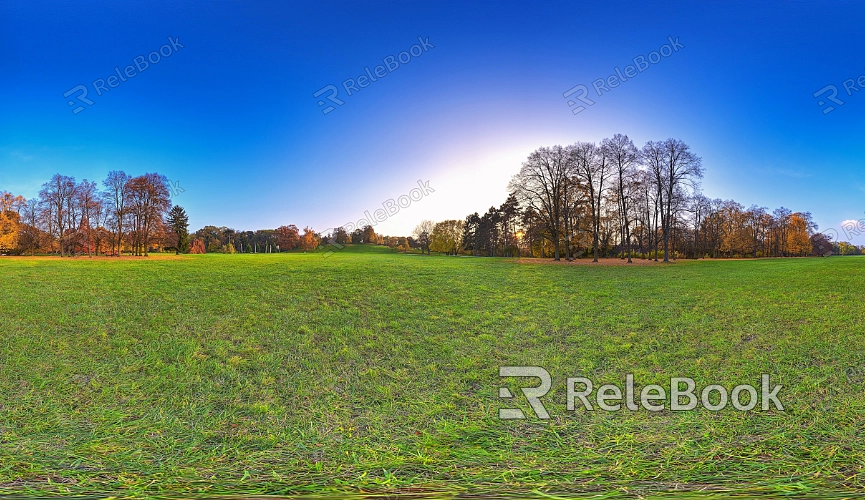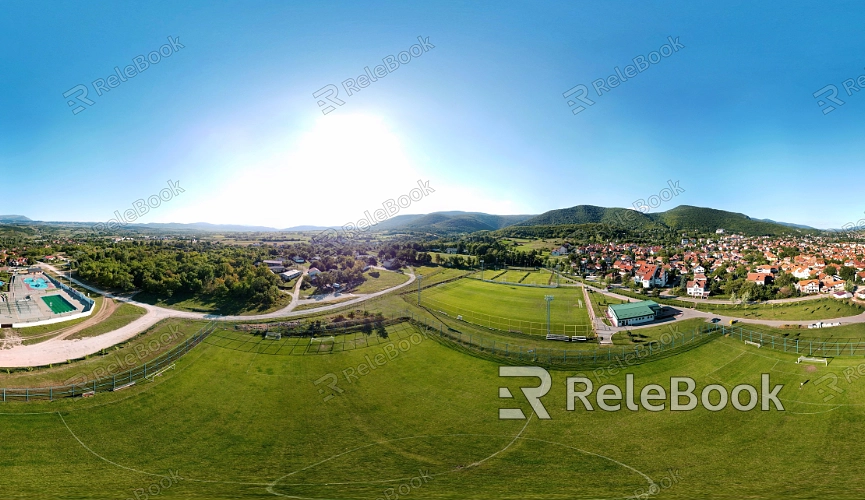What Are the Benefits of Using HDR Grass Textures in 3D Scenes
In many scenarios, designers aim to incorporate natural elements like grass into their 3D environments. HDR (High Dynamic Range) textures are especially effective at enhancing light and shadow, making them a popular choice for outdoor scenes where realistic lighting and details are critical. In this article, we’ll explore the specific benefits of using HDR grass textures in 3D scenes and how they can help designers streamline their workflow and improve render quality.

1.Enhancing Realism in Grass
HDR grass textures significantly boost the realism of grass in 3D environments by capturing a broader range of light intensities.
More Detailed Representation: Compared to standard Low Dynamic Range (LDR) textures, HDR grass textures better represent how grass blades react to different lighting conditions. They provide sharper details, showcasing smooth transitions between highlights and shadows in any lighting scenario.
Natural Light and Shadow Effects: HDR textures excel at simulating natural lighting. Whether in direct sunlight or overcast conditions, they accurately reflect light, shadows, and the subtle nuances of the environment on the grass, resulting in a more lifelike scene.
2.Achieving More Realistic Renders
In 3D rendering, the interaction between lighting and textures plays a crucial role in the overall realism. Using HDR grass textures brings render results closer to how light behaves in real life.
Precise Light Interaction: With HDR grass textures, light reflects and scatters across the grass more naturally, as these textures can simulate scenes with varying levels of brightness. This enhances the authenticity of the entire environment.
Enhanced Ambient Lighting Effects: HDR textures improve ambient lighting, particularly during low-angle lighting conditions like sunrise or sunset. The grass takes on a soft, realistic glow, adding depth and atmosphere to the scene.
3.Reducing Post-Production Work
HDR grass textures can reduce the need for extensive post-production adjustments, saving time in the later stages of a project.
Automatic Light Adaptation: Since HDR textures contain a high range of brightness information, they naturally adapt to different light sources in the scene. This minimizes the need for complex adjustments to brightness and contrast during post-production.
Increased Efficiency: Thanks to the high quality of HDR grass textures, designers can finalize most details before rendering, decreasing the need for multiple rounds of post-render tweaks and speeding up the overall workflow.
4.Providing Creative Flexibility
The use of HDR grass textures offers designers greater creative freedom when building outdoor landscapes, whether for landscape design, urban planning, or architectural visualization.
Adaptability to Various Lighting Conditions: HDR grass textures can handle diverse lighting environments, from bright sunny days to cloudy afternoons or even nighttime scenes. This flexibility allows designers to explore different lighting setups without worrying about the textures looking unnatural.
Multi-Platform Compatibility: HDR grass textures are compatible with various 3D software, including Blender, 3ds Max, and others, meaning designers can work across platforms without concerns about texture compatibility.

5.Improving Render Speed
Modern rendering engines are optimized to work efficiently with HDR textures, improving render speed, especially in large outdoor scenes.
Efficient Light Calculations: Many render engines, such as V-Ray or Cycles, can leverage HDR textures to perform faster light calculations, thus speeding up the rendering process.
Optimized for Large-Scale Scenes: HDR grass textures reduce the computational load in complex lighting and shadow scenarios, which helps maintain smooth performance when rendering expansive grass fields or outdoor landscapes.
6.Suitability for Various Design Styles
HDR grass textures can support a wide range of project styles, whether you’re going for a realistic or stylized look. Designers can adjust these textures to suit various design aesthetics.
Realistic Nature Scenes: In projects where high levels of realism are required, such as architectural visualization or nature-inspired designs, HDR grass textures offer unparalleled accuracy and detail.
Stylized or Abstract Looks: By tweaking the color and lighting of HDR grass textures, designers can also use them in more artistic or cartoonish environments, adapting them to fit different visual styles.
7.Streamlining Material Editing
HDR grass textures also make material editing more intuitive, providing designers with more control when fine-tuning grass materials.
Precise Control Over Brightness and Contrast: With HDR’s high dynamic range, designers can adjust the brightness and contrast of the grass more easily, allowing for more intuitive control over how the grass appears in the scene.
Real-Time Material Preview: Modern 3D software often supports real-time HDR material previews, allowing designers to see the effects of their adjustments immediately. This saves time during the design process by eliminating the need for constant test renders.
By incorporating HDR grass textures, 3D modeling and rendering artists can achieve more lifelike and natural scene effects while improving workflow efficiency and creative flexibility. These advantages are evident across various projects, whether in architectural visualization, game development, or visual effects. Relebook offers a vast library of HDR resources, helping designers find the perfect grass textures for their projects and enabling efficient, high-quality renders across multiple platforms.


